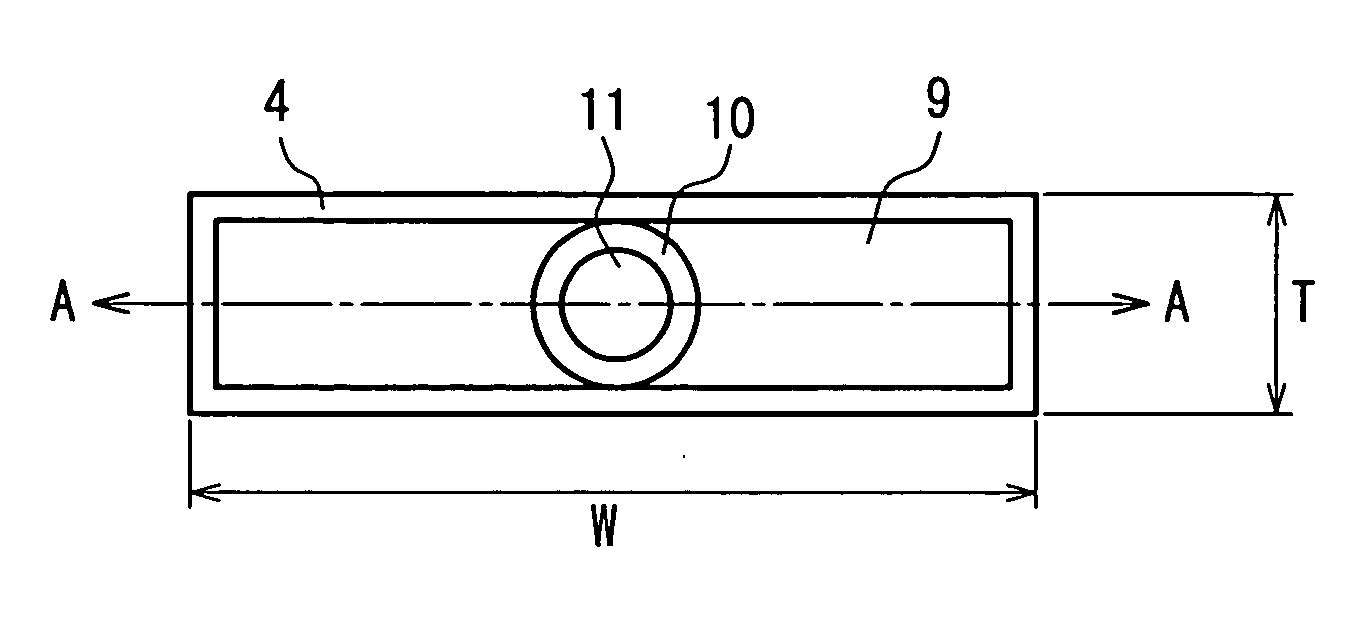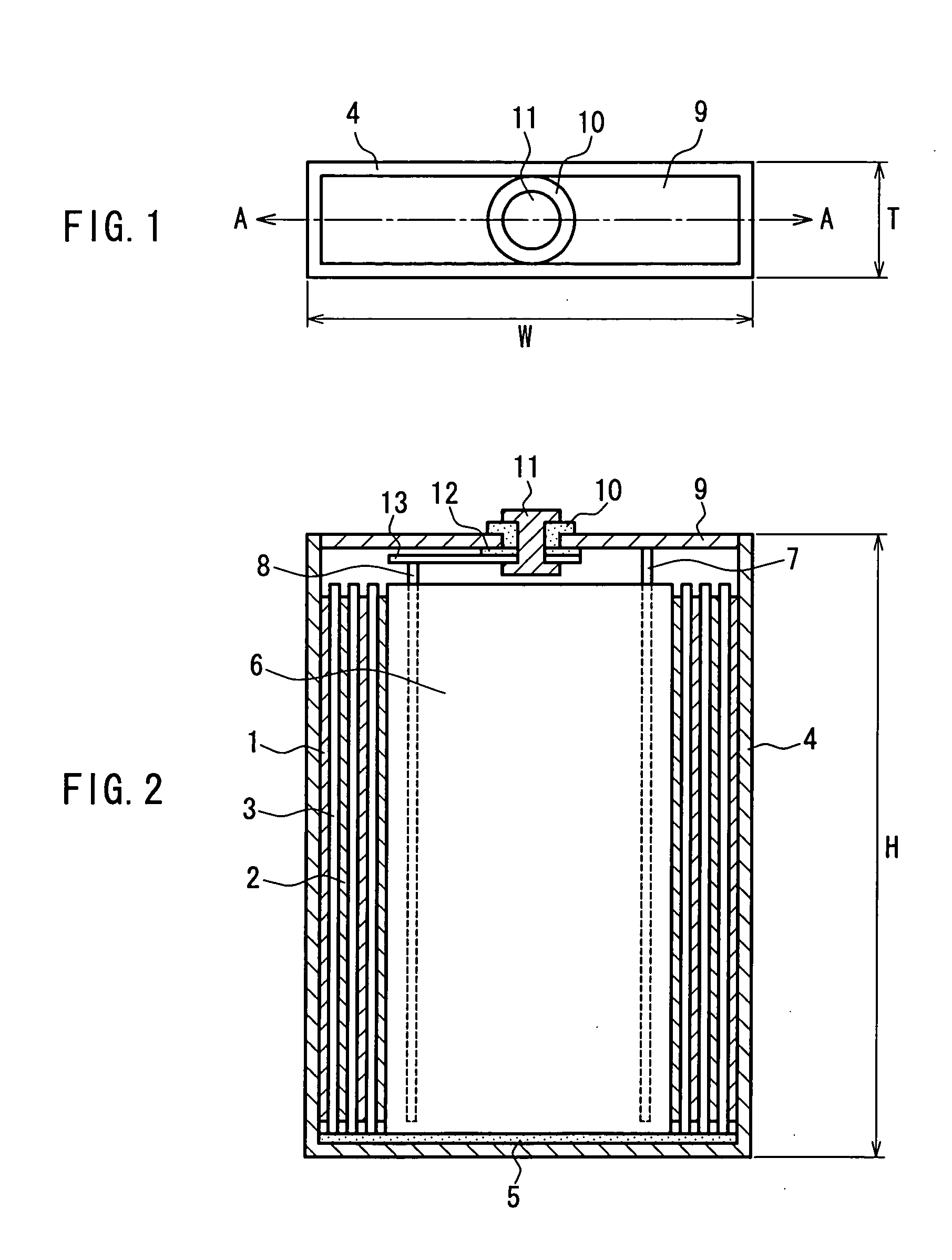Nonaqueous secondary cell and electronic device incorporating same
a secondary cell and non-aqueous technology, applied in the field of non-aqueous secondary batteries, can solve the problems of reducing the safety of the battery, and achieve the effects of improving safety, enhancing safety, and excellent
Inactive Publication Date: 2004-07-22
HITACHT MAXELL LTD
View PDF14 Cites 24 Cited by
- Summary
- Abstract
- Description
- Claims
- Application Information
AI Technical Summary
Benefits of technology
[0014] Because of the above configuration, a non-aqueous secondary battery excellent in safety, high rate characteristics, and storage at a high temperature can be provided.
[0040] Next, an embodiment of electronic equipment of the present invention will be described. The electronic equipment of the present embodiment contains the above-mentioned non-aqueous secondary battery. Because of this, even in the case where a charge control mechanism is not operated successfully, heat generation of the battery is small, so that the electronic equipment can be prevented from being broken and losing reliability. More specifically, in a conventional battery with its capacity increased by using a thin separator, the battery itself generates heat due to an internal short circuit caused by an increase in the temperature of the battery, and the temperature of the battery is further increased. Because of this, the electronic equipment containing such a battery is likely to be damaged by the heat generation of the battery. Particularly, such an effect is remarkable in the electronic equipment having a large charging current of 0.6 A or more. However, in the non-aqueous secondary battery of the present invention, an internal short circuit at a high temperature is suppressed from occurring, so that the above-mentioned problem is unlikely to arise, and the reliability of the electronic equipment can be enhanced.
Problems solved by technology
In the case of increasing the capacity of a non-aqueous secondary battery, the heat generation quantity of the battery is increased during overcharging, and the battery is likely to exhibit thermal runaway, which causes a problem of decrease in safety of the battery.
Method used
the structure of the environmentally friendly knitted fabric provided by the present invention; figure 2 Flow chart of the yarn wrapping machine for environmentally friendly knitted fabrics and storage devices; image 3 Is the parameter map of the yarn covering machine
View moreImage
Smart Image Click on the blue labels to locate them in the text.
Smart ImageViewing Examples
Examples
Experimental program
Comparison scheme
Effect test
example 2
[0050] A non-aqueous secondary battery was produced in the same way as in Example 1, except that fluorobenzene was not added an electrolyte solution.
the structure of the environmentally friendly knitted fabric provided by the present invention; figure 2 Flow chart of the yarn wrapping machine for environmentally friendly knitted fabrics and storage devices; image 3 Is the parameter map of the yarn covering machine
Login to View More PUM
| Property | Measurement | Unit |
|---|---|---|
| thickness | aaaaa | aaaaa |
| temperature | aaaaa | aaaaa |
| heat shrinkage | aaaaa | aaaaa |
Login to View More
Abstract
A non-aqueous secondary battery includes a positive electrode 1, a negative electrode 2, a separator 3, and a non-aqueous electrolyte solution, wherein the non-aqueous electrolyte solution contains an aromatic compound in an amount of 2 to 15% by mass with respect to a total mass of the electrolyte solution, the separator 3 has a MD direction and a TD direction, a heat shrinkage at 150° C. in the TD direction of 30% or less, a thickness of 5 to 20 mum, and an air permeability of 500 seconds / 100 ml or less. Because of this, a non-aqueous secondary battery can be obtained, which is excellent in safety and high rate characteristics and is operated stably even at a high temperature. Furthermore, by allowing the non-aqueous secondary battery of the present invention to be contained in electronic equipment, the reliability of the electronic equipment can be enhanced. Furthermore, a prismatic or laminate-shaped non-aqueous secondary battery is pressed in its direction to be contained in electronic equipment, whereby the safety of the electronic equipment can be enhanced.
Description
[0001] The present invention relates to a non-aqueous secondary battery excellent in safety, and electronic equipment containing the same.[0002] There tends to be an increasing demand for non-aqueous secondary batteries such as a lithium ion secondary battery due to its large capacity, high voltage, high energy density, and a high output. A further increase in a capacity and in a charging voltage of the non-aqueous secondary battery also have been studied, and a further increase in a discharge capacity by increasing a charging amount of the battery is expected.[0003] In the case of increasing the capacity of a non-aqueous secondary battery, the heat generation quantity of the battery is increased during overcharging, and the battery is likely to exhibit thermal runaway, which causes a problem of decrease in safety of the battery. As means for solving this problem, it is effective that an aromatic compound is contained in an electrolyte solution, as disclosed in JP 5(1993)-36439 A, J...
Claims
the structure of the environmentally friendly knitted fabric provided by the present invention; figure 2 Flow chart of the yarn wrapping machine for environmentally friendly knitted fabrics and storage devices; image 3 Is the parameter map of the yarn covering machine
Login to View More Application Information
Patent Timeline
 Login to View More
Login to View More Patent Type & Authority Applications(United States)
IPC IPC(8): H01M4/13H01M4/131H01M10/05H01M4/62H01M6/16H01M10/052H01M10/0525H01M10/0567H01M10/0569H01M10/42H01M50/403H01M50/417H01M50/494
CPCH01M2/0217H01M2/1066H01M2/145H01M2/16H01M2/162H01M2/18Y02E60/122H01M10/0567H01M10/0569H01M10/4235H01M2004/021H01M2300/0025H01M2300/0037H01M10/0525Y02E60/10H01M50/103H01M50/44H01M50/403H01M50/417H01M50/494H01M10/0568H01M50/489H01M50/463H01M10/0585H01M4/48H01M50/102H01M10/0468H01M2220/30
Inventor ISHIKAWA, TAKUSHIKITA, FUSAJI
Owner HITACHT MAXELL LTD
Features
- R&D
- Intellectual Property
- Life Sciences
- Materials
- Tech Scout
Why Patsnap Eureka
- Unparalleled Data Quality
- Higher Quality Content
- 60% Fewer Hallucinations
Social media
Patsnap Eureka Blog
Learn More Browse by: Latest US Patents, China's latest patents, Technical Efficacy Thesaurus, Application Domain, Technology Topic, Popular Technical Reports.
© 2025 PatSnap. All rights reserved.Legal|Privacy policy|Modern Slavery Act Transparency Statement|Sitemap|About US| Contact US: help@patsnap.com


